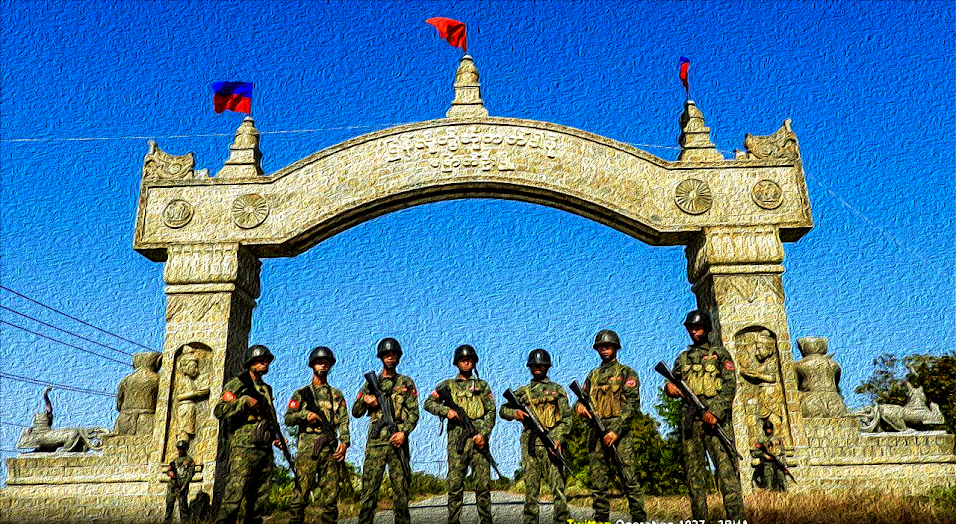Myanmar Spring Chronicle – January 08, 2024 by MoeMaKa Media
Myanmar Navigates Turbulent Waters as Civil War Peaks
In the aftermath of the military coup on February 1, 2021, Myanmar finds itself at the zenith of a raging civil war, a conflict spurred by the military’s rejection of the 2020 general election results. The military’s attempt to revert to a pre-2010 scenario has set the stage for an armed resistance, marking a pivotal moment in Myanmar’s contemporary history.
The coup military’s miscalculation lies in its failure to recognize the vast differences between the political landscape of 2010 and that post-February 1, 2021. They executed the coup under the assumption of weakened unity and fractured relationships between the National League for Democracy (NLD), the dominant force in the 2020 election, and various ethnic political parties. The coup unfolded gradually over nearly two months, suggesting a strategic approach rather than an unforeseen seizure of power. This raises questions: Is it an indication of a desire for compromise with the NLD, or a defensive stance aimed at proving their innocence amidst allegations of vote count discrepancies?
The 90 days following the November 2020 election have irreversibly shaped the current landscape. The military, facing its lowest ebb in strength and morale since independence in 1948, stands on the precipice of a defining moment. Politically, the current situation surpasses the challenges faced during the 1949 civil war when the local government’s influence was confined to Yangon.
During the 1949 civil war, the Myanmar Military, then known as the Yangon government, retained public support owing to its roles in World War II and the anti-fascist struggle. However, internal ideological differences weakened the military, leading to a civil war centered on conflicting political paths and views on the authenticity of the new independence.
In contrast, the post-2021 scenario witnesses a resolute determination among ethnic armed groups to confront and overthrow the coup through armed means. The existing liberated areas, with well-organized armed forces and decades of military experience in the quest for self-determination, diverge significantly from the circumstances of the 1949–51 civil war.
The Myanmar military, despite recovering from the 1949 situation, might be relying on misplaced expectations that comparative logic will align with the present circumstances. However, the current situation after 2021 signals the beginning or the middle of the end for the military’s dominance in Myanmar’s history. With public support at its lowest, armed groups have emerged across ethnicities and among Burmans, united by their opposition to the military.
In the age of information and technology, the domino effect has come into play, where the defeat and demoralization of military council forces quickly spread across regions. Advances in information technology facilitate collaboration, enabling morale breakdowns and losses to reverberate across locations.
The prevailing military conditions underscore the need for immediate strategic political planning. Building a political landscape that accommodates successful ethnic armed groups and aligns with the National Unity Government is imperative. While the aspiration is to construct a federal system and a united Union of Myanmar, a cohesive commitment is yet to be established among all ethnic armed groups and the National Unity Government.
Decisions must be made promptly regarding the reorganization of the Federal Union of Myanmar or the establishment of a federal system that allows individual states autonomy in determining their economic and political systems with a loose bond. Although the probability is low, contingency plans are necessary for the worst-case scenario—territorial competitions among armed forces from various regions.
To avoid straying into such a situation, emphasis must be placed on political views, ideology, and the prioritization of politics over military actions. As Myanmar grapples with the peak of civil strife, the path forward demands strategic political maneuvering to navigate the nation’s destiny.

